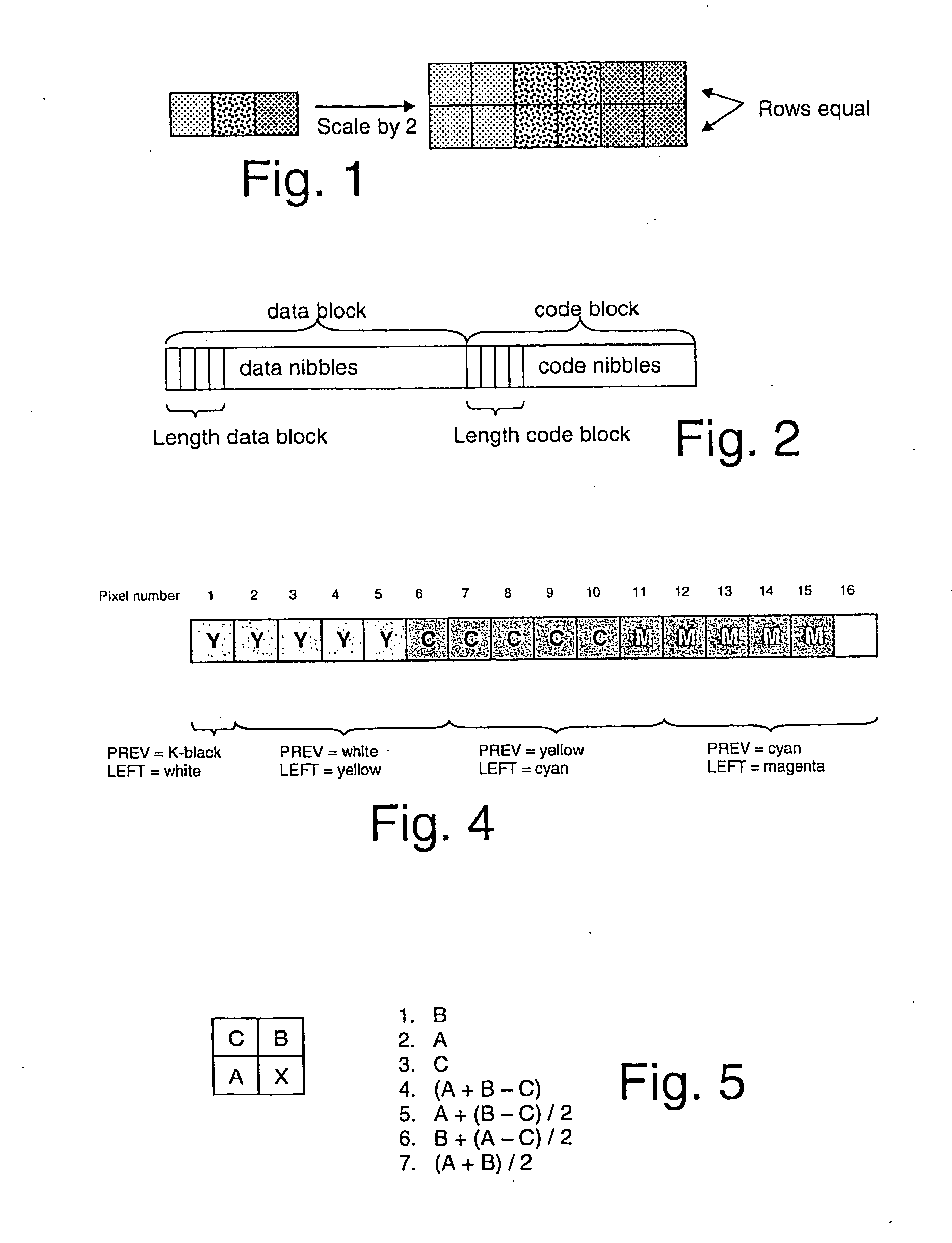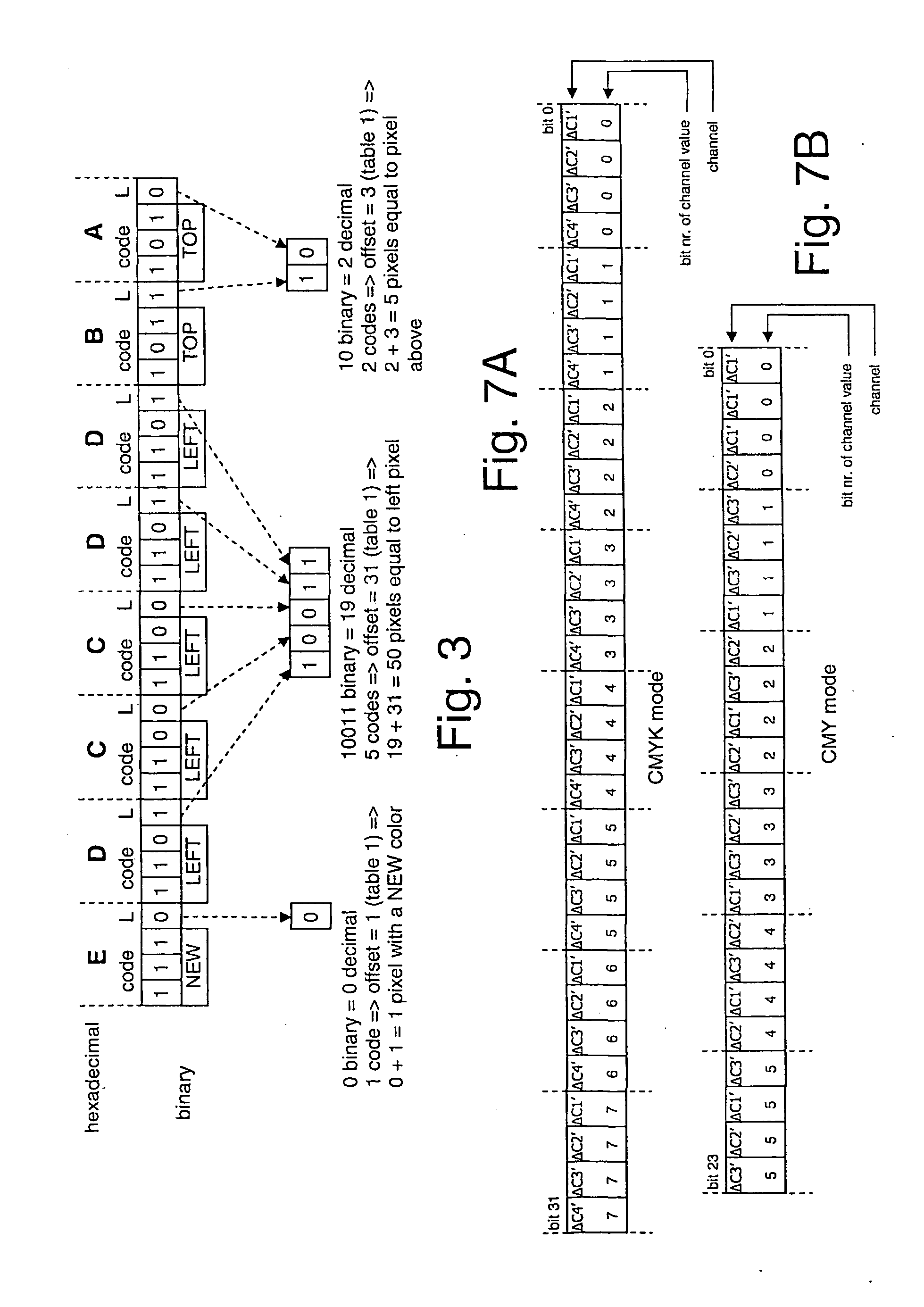Lossless Compression of Color Image Data Using Entropy Encoding
a color image data and entropy encoding technology, applied in the field of lossless compression of continuous tone images, can solve the problems of consuming a large amount of storage space to store images, consuming a large amount of time to transport, and consuming a large amount of time to compress compression techniques that provide a reasonable amount of compression, etc., to achieve the effect of allowing lossless compression of pdl generated images and low complexity
- Summary
- Abstract
- Description
- Claims
- Application Information
AI Technical Summary
Benefits of technology
Problems solved by technology
Method used
Image
Examples
first embodiment
[0046]the present invention, which is a compression method intended for colored images, will now be described.
Compressed Image Format in the First Embodiment
[0047]The compressed image format consists of a sequence of bytes each containing two 4-bit nibbles. The first nibble in each byte is the high order 4 bits of the byte; the second nibble in each byte is the low order 4 bits of the byte. A nibble is the smallest unit of data in the compressed image format in this first embodiment. The reason for working with nibbles as smallest unit of data rather than with bits is because nibbles can be handled more efficiently on a general-purpose processor than single bits. All numbers that consist of multiple nibbles are represented with the highest order nibble first and the lowest order nibble last.
[0048]The compressed image format is organized as a sequence of information blocks that each describe one scanline, in the order in which the scanlines occur on the page. The reason for choosing ...
second embodiment
[0180]the present invention, which is a compression method intended for continuous tone black-and-white (grey-value) images, will now be described.
[0181]The mechanisms used in the second embodiment are the same as those of the first embodiment described above, namely:
[0182]The compression is done on a line-per-line basis. For each line the compressed data is organized in 2 parts, the “data block” and the “code block”.
[0183]For each pixel or each set of identical pixels, a code or a series of codes are generated in the code block. For some codes (NEWi codes), additional data are necessary which are stored in the data block. At the end of each scanline, the data block and the code block are put together to generate the compressed data for the current line.
[0184]The second embodiment uses a reduced set of codes and is bit-oriented (as opposed to the nibble-oriented first embodiment). More particularly, codes are always 3 bits long, but the associated parts in the data block have variab...
PUM
 Login to View More
Login to View More Abstract
Description
Claims
Application Information
 Login to View More
Login to View More - R&D
- Intellectual Property
- Life Sciences
- Materials
- Tech Scout
- Unparalleled Data Quality
- Higher Quality Content
- 60% Fewer Hallucinations
Browse by: Latest US Patents, China's latest patents, Technical Efficacy Thesaurus, Application Domain, Technology Topic, Popular Technical Reports.
© 2025 PatSnap. All rights reserved.Legal|Privacy policy|Modern Slavery Act Transparency Statement|Sitemap|About US| Contact US: help@patsnap.com



